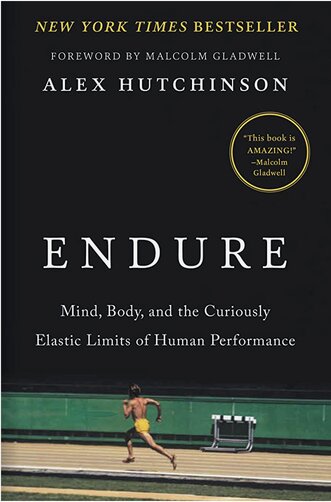Endurance is the struggle to continue against a mounting desire to stop.
In Endure: Mind, Body, and the Curiously Elastic Limits of Human Performance, Journalist and Runner Alex Hutchinson writes about the science and psychology of endurance, revealing the secrets of reaching the hidden extra potential within us all.
The limits of endurance
In 1991, Michael Joyner, an ex-collegiate runner from the University of Arizona who was completing a medical residency at the Mayo Clinic in Minnesota, proposed a provocative thought experiment.
The limits of endurance running, according to physiologists, could be quantified with three parameters:
- Aerobic capacity, also known as VO2max, which is analogous to the size of a car’s engine;
- Running economy, which is an efficiency measure like gas mileage; and
- Lactate threshold, which dictates how much of your engine’s power you can sustain for long periods of time.
Endurance
Part of the challenge is that endurance is a conceptual Swiss Army knife. It’s what you need to finish a marathon; it’s also what enables you to keep your sanity during a cross-country flight crammed into the economy cabin with a flock of angry toddlers.
“A runner is a miser, spending the pennies of his energy with great stinginess, constantly wanting to know how much he has spent and how much longer he will be expected to pay. He wants to be broke at precisely the moment he no longer needs his coin.” – John L. Parker Jr. ,Once a Runner
Pacing
You might think the best test of maximal endurance is fairly obvious: a race. But race performance depends on highly variable factors like pacing. You may have the greatest endurance in the world, but if you’re an incurable optimist who can’t resist starting out at a sprint (or a coward who always sets off at a jog), your race times will never accurately reflect what you’re physically capable of.
In 1923, Hill and his colleague Hartley Lupton, then based at the University of Manchester, published the first of a series of papers investigating what they initially called “the maximal oxygen intake”—a quantity now better known by its scientific shorthand, VO2max.
VO2max
At low speeds, the effort is primarily aerobic (meaning “with oxygen”), since oxygen is required for the most efficient conversion of stored food energy into a form your muscles can use. Your VO2max reflects your aerobic limits. At higher speeds, your legs demand energy at a rate that aerobic processes can’t match, so you have to draw on fast-burning anaerobic (“without oxygen”) energy sources.
Central Governor
The limits we encounter during exercise aren’t a consequence of failing muscles; they’re imposed in advance by the brain to ensure that we never reach true failure. And second, the brain imposes these limits by controlling how much muscle is recruited at a given effort level.
If you stick your finger in a candle flame, your natural response will be to yank it out as soon as you start feeling heat. The essence of pushing to your limits in endurance sports is learning to override that instinct so that you can hold your finger a little closer to the flame—and keep it there, not for seconds but for minutes or even hours.
We play the way we train
Well-trained athletes can tolerate more pain; others have shown that regular physical training, especially if it involves unpleasant high-intensity workouts, increases your pain tolerance. But the link between what’s happening in your muscles and what you feel in your head turns out to be much more indirect than you might assume.
Lactate Threshold
The point at which you’re working hard enough that levels of lactate in your blood start creeping inexorably upward.
Oxygen
There is no limit more fundamental—to endurance and to life itself—than oxygen. We grasp its importance viscerally, in the lung-bursting gasps of physical exhaustion and the mounting panic of breath-holding. The urge to breathe (which is actually driven by a build-up of carbon dioxide rather than a lack of oxygen) turns out to be a warning signal that you can choose to ignore—up to a point.
Thirst
According to calculations by U.S. Army researchers in a wilderness medicine textbook, you might last, in theory, for about seven days without water under ideal indoor conditions before reaching this critical point. If you’re lost in a hot desert and travel only by night, your expected survival plummets to twenty-three hours; if you also travel during the day, it’s sixteen hours.
British scientists at the University of Loughborough estimated that a marathoner could conceivably lose 1 to 3 percent of his or her body mass without any net loss of water.
Fuel
It’s not just how much fuel is in the tank, in other words. Endurance performance also depends on what types of fuel you have available, where it’s stored, and how quickly you can access it. The three basic fuel options are protein, carbohydrate, and fat. While protein is important for building and repairing muscles after resistance exercise, it plays a negligible role in directly fueling muscle contractions.
All training is brain training, even if it doesn’t specifically target the brain.



Comments are closed.